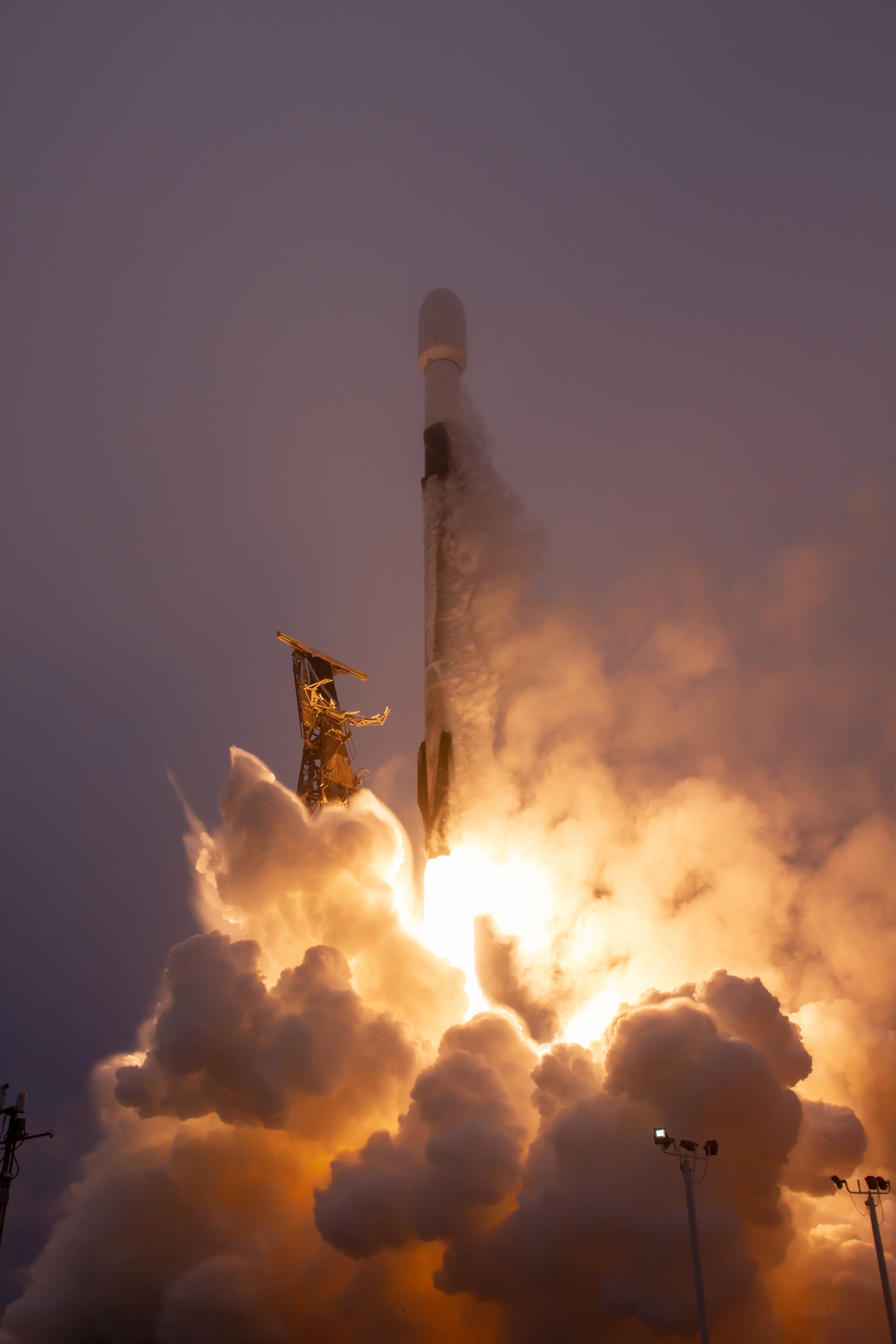WASHINGTON — The Space Development Agency launched its second batch of data transport and missile tracking satellites Sept. 2, laying the foundation for a constellation that will serve as the backbone of the Pentagon’s vision for all-domain operations.
A SpaceX Falcon 9 rocket carried the 13 satellites to low Earth orbit, about 1,200 miles above the planet’s surface. The mission lifted off from Vandenberg Space Force Base in California and featured 10 transport spacecraft built by Lockheed Martin, one from Colorado-based York Space Systems and two tracking satellites from SpaceX.
Four L3Harris-built tracking satellites previously slated to be on this mission will instead fly on a separate Missile Defense Agency launch later this year due to production delays.
The satellites are part of SDA’s Tranche 0 capability, which will ultimately include 28 spacecraft — eight of which are designed to detect and track ballistic and hypersonic missiles and 20 that will use optical links to transfer data from space-based sensors to users on the ground. The total cost to develop, launch and operate Tranche 0 through fiscal 2025 is $980 million.
SDA considers the first 28 satellites its “warfighter immersion” tranche, helping to demonstrate the feasibility of its plan to launch a constellation comprised of hundreds of small satellites, dubbed the Proliferated Warfighter Space Architecture. Future tranches will build on this capability, bringing new technology and performance enhancements.
The agency launched its first 10 Tranche 0 satellites in April, and program Director Mike Eppolito told reporters during an Aug. 30 pre-launch briefing the satellites are performing well in orbit.
“I’m incredibly happy with the progress we’ve made with the satellites that we have on orbit at this point,” he said.
He noted, however, that SDA is still awaiting approval from the Federal Aviation Administration to operate its transport satellites that are equipped with Link 16 terminals that will allow them to push data gathered through satellite sensors to fighter aircraft and other weapon systems. The certification delay meant SDA wasn’t able to participate in U.S. Indo-Pacific Command’s joint training exercise called Northern Edge.
Eppolito said he expects the agency to receive waivers “in the near term” to allow it to demonstrate that capability.
“Whenever you’re demonstrating new technology, there’s always going to be policy hurdles,” he said. “Part of SDA demonstrating this new way of doing business is going to be dragging some of that policy along and making sure that we get policy changes on a timely basis that satisfies the pace at which we’re building these satellites.”
Eppolito said overcoming policy hurdles is just one of the lessons SDA has learned from launching its first tranche of satellites. Another challenge the agency has faced is building the industrial base needed to support its low Earth orbit constellation. Tranche 0, he said, helped strengthen the supplier base for future capability layers and signaled to industry that the agency’s demand for key components isn’t temporary.
“I think we’ve shown industry that they can count on SDA to continue procuring these satellites,” Eppolito said. “They’re able to invest in our commodities and we’ll get that fully commoditized satellite that we want.”
Courtney Albon is C4ISRNET’s space and emerging technology reporter. She has covered the U.S. military since 2012, with a focus on the Air Force and Space Force. She has reported on some of the Defense Department’s most significant acquisition, budget and policy challenges.








